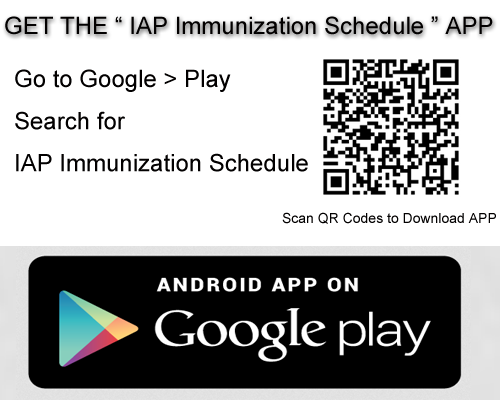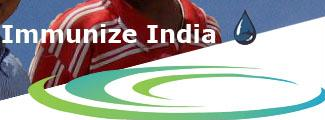General Questions
What is measles?
Measles is an infectious viral disease that occurs most often in the late winter and spring. It begins with a fever that lasts for a couple of days, followed by a cough, runny nose, and conjunctivitis (pink eye). A rash starts on the face and upper neck, spreads down the back and trunk, then extends to the arms and hands, as well as the legs and feet. After about 5 days, the rash fades the same order in which it appeared.
How can I catch measles?
Measles is highly contagious. Infected people are usually contagious from about 4 days before their rash starts to 4 days afterwards. The measles virus resides in the mucus in the nose and throat of infected people. When they sneeze or cough, droplets spray into the air and the droplets remain active and contagious on infected surfaces for up to 2 hours.
How serious is the disease?
Measles itself is unpleasant, but the complications are dangerous. Six to 20 percent of the people who get the disease will get an ear infection, diarrhea, or even pneumonia. One out of 1000 people with measles will develop inflammation of the brain, and about one out of 1000 will die.
Why is vaccination necessary?
In the decade before the measles vaccination program began, an estimated 3-4 million persons in the United States were infected each year, of whom 400-500 died, 48,000 were hospitalized, and another 1,000 developed chronic disability from measles encephalitis. Widespread use of measles vaccine has led to a greater than 99% reduction in measles cases in the United States compared with the pre-vaccine era.
However, measles is still common in other countries. The virus is highly contagious and can spread rapidly in areas where vaccination is not widespread. It is estimated that in 2006 there were 242,000 measles deaths worldwide-that equals about 663 deaths every day or 27 deaths every hour. If vaccinations were stopped, measles cases would return to pre-vaccine levels and hundreds of people would die from measles-related illnesses.
Is measles still a problem in the United States?
We still see measles among visitors to the United States and among U.S. travelers returning from other countries. The measles viruses these travelers bring into our country sometimes cause outbreaks; however, because most people in the United States have been vaccinated, these outbreaks are usually small.
In the last decade, measles vaccination in the United States has decreased the number of cases to the lowest point ever reported. Widespread use of the measles vaccine has led to a greater than 99% reduction in measles compared with the decade before the measles vaccination program began, when an estimated 3-4 million persons in the United States were infected each year, 400-500 died, 48,000 were hospitalized, and another 1,000 developed chronic disability from measles encephalitis.
If the chance of the diseases is so low, why do I need the vaccine?
It is true that vaccination has enabled us to reduce measles and most other vaccine-preventable diseases to very low levels in the United States. However, measles is still very common-even epidemic-in other parts of the world. Visitors to our country and unvaccinated U.S. travelers returning from other countries can unknowingly bring (import) measles into the United States. Since the virus is highly contagious, such imported cases can quickly spread, causing outbreaks or epidemics among unvaccinated people and under-vaccinated communities.
To protect your children, yourself, and others in the community, it is important to be vaccinated against measles. You may think your chance of getting measles is small, but the disease still exists and can still infect anyone who is not protected.
What kind of vaccine is given to prevent measles?
The MMR vaccine prevents measles and 2 other viral diseases-mumps and rubella. These 3 vaccines are safe given together. MMR is an attenuated (weakened) live virus vaccine. This means that after injection, the viruses grows and causes a harmless infection in the vaccinated person with very few, if any, symptoms. The person's immune system fights the infection caused by these weakened viruses and immunity develops which lasts throughout that person's life.
How effective is MMR vaccine?
More than 95% of the people who receive a single dose of MMR will develop immunity to all 3 viruses. A second vaccine dose gives immunity to almost all of those who did not respond to the first dose.
Recommendations
Why is MMR vaccine given after the first birthday?
Most infants born in the United States will receive passive protection against measles, mumps, and rubella in the form of antibodies from their mothers. These antibodies can destroy the vaccine virus if they are present when the vaccine is given and, thus, can cause the vaccine to be ineffective. By 12 months of age, almost all infants have lost this passive protection.
What is the best age to give the second dose of MMR vaccine?
The second dose of MMR can be given at any time, as long as the child is at least 12 months old and it has been at least 28 days since the first dose. However, the second dose is usually administered before the child begins kindergarten or first grade (4-5 years of age) or before entry to middle school (11-12 years of age). The age at which the second dose is required is generally mandated by state school entry requirements.
As an adult, do I need the MMR vaccine?
You do not need the MMR vaccine if you
had blood tests that show you are immune to measles, mumps, and rubella
are someone born before 1957
already had two doses of MMR or one dose of MMR plus a second dose of measles vaccine
already had one dose of MMR and are not at high risk of measles exposure
You should get the measles vaccine if you are not among the categories listed above, and
are a college student, trade school student, or other student beyond high school
work in a hospital or other medical facility
travel internationally, or are a passenger on a cruise ship
are a woman of childbearing age
Do people who received MMR in the 1960s need to have their dose repeated?
Not necessarily. People who have documentation of receiving LIVE measles vaccine in the 1960s do not need to be revaccinated. People who were vaccinated prior to 1968 with either inactivated (killed) measles vaccine or measles vaccine of unknown type should be revaccinated with at least one dose of live attenuated measles vaccine. This recommendation is intended to protect those who may have received killed measles vaccine, which was available in 1963-1967 and was not effective.
Why are people born before 1957 exempt from receiving MMR vaccine?
People born before 1957 lived through several years of epidemic measles before the first measles vaccine was licensed. As a result, these people are very likely to have had the measles disease. Surveys suggest that 95% to 98% of those born before 1957 are immune to measles. Note: The "1957 rule" applies only to measles and mumps-it does NOT apply to rubella.
Precautions and Possible Reactions
I am 2 months pregnant. Is it safe for me to have my 15-month-old child vaccinated with the MMR vaccine?
Yes. Measles, mumps, and rubella vaccine viruses are not transmitted from the vaccinated person, so MMR does not pose a risk to a pregnant household member.
I am breast feeding my 2-month-old baby. Is it safe for me to receive the MMR vaccine?
Yes. Breast feeding does not interfere with the response to MMR vaccine, and your baby will not be affected by the vaccine through your breast milk.
My 15-month-old child was exposed to chickenpox yesterday. Is it safe for him to receive the MMR vaccine today?
Yes. Disease exposure, including chickenpox, should not delay anyone from receiving the benefits of the MMR or any other vaccine.
What is the most common reaction following MMR vaccine?
Most people have no reaction. However, 5-10 percent of the people receiving the MMR vaccine experience a low-grade fever and a mild rash.
Last Updated : 10/01/2020
© Copyright 2015, All Rights Reserved by ACVIP. Powered by: ITindustries.com







